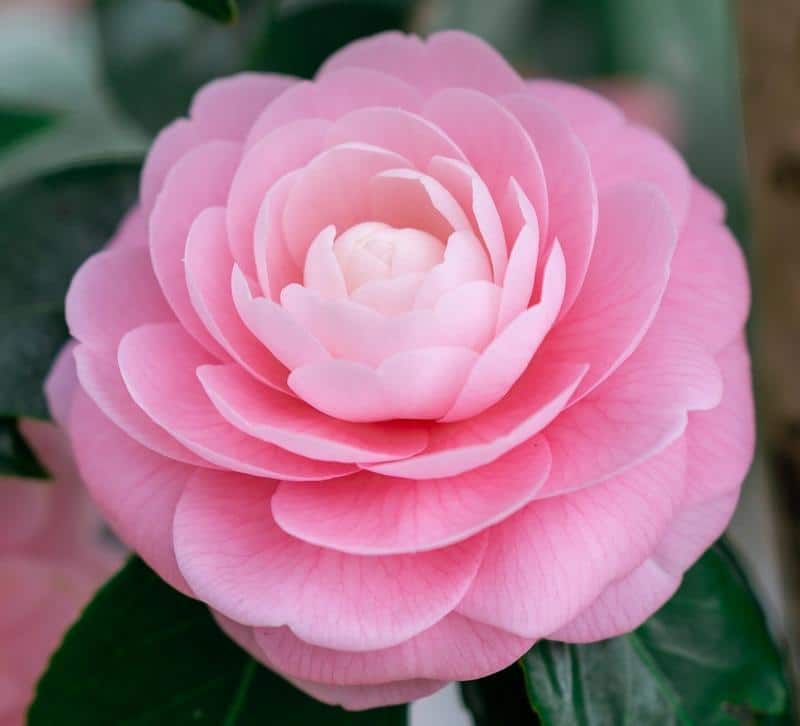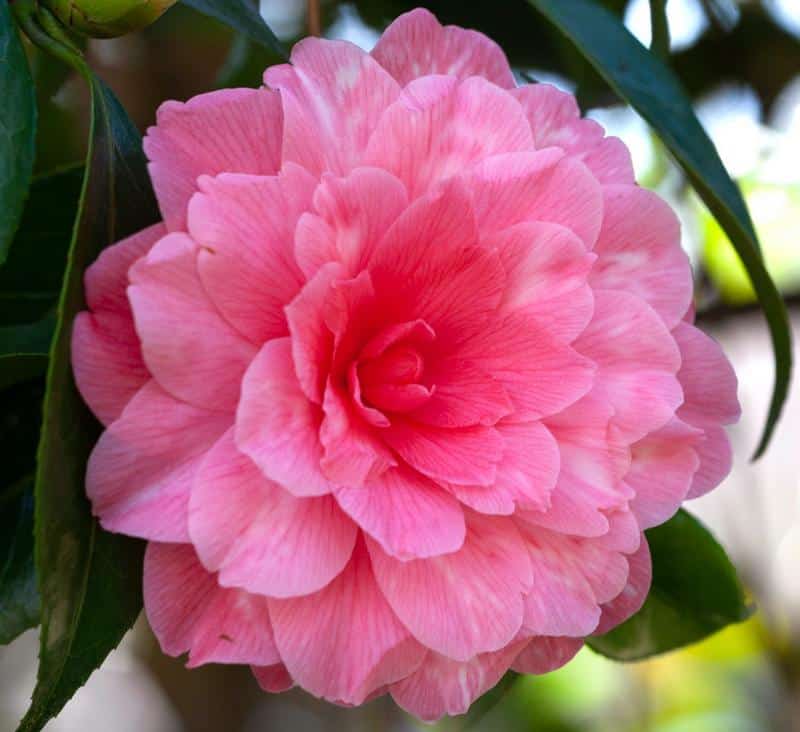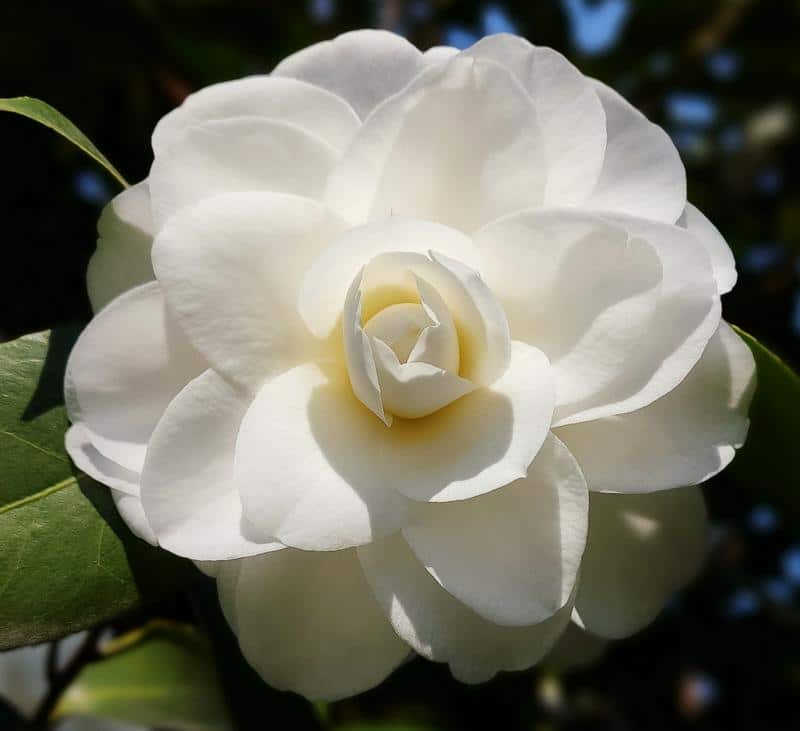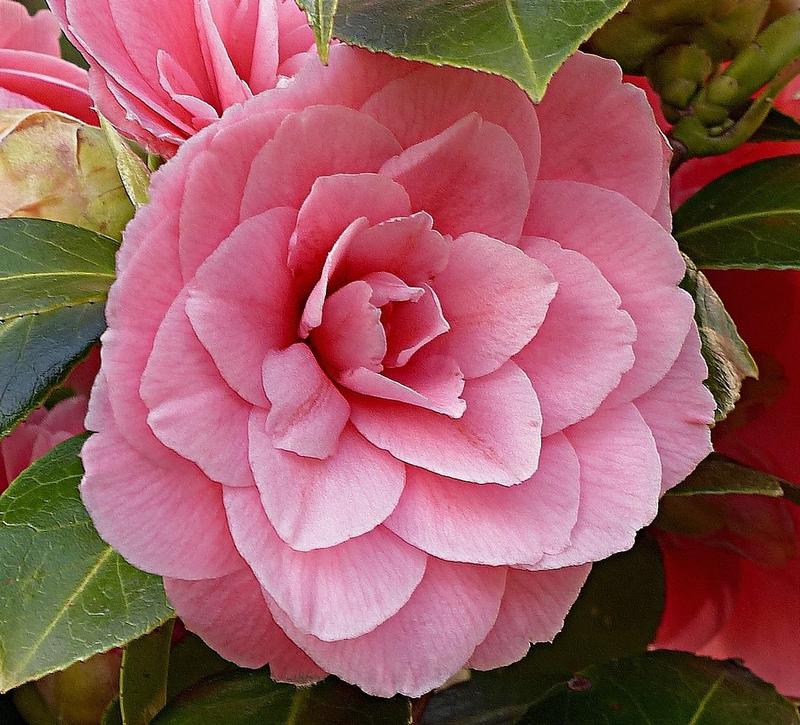Are Camellias Poisonous to Dogs? Are Camellias Toxic to Dogs?
Are camellias poisonous to dogs? Are camellias toxic to dogs? In this article, we’ll go over everything you need to know about the subject of if camellia flowers are safe for dogs and what to do if your dog ate camellias. We’ll then explain the two commands that will ensure your dog stays safe around camellias and other possibly poisonous plants.
Next, we’ll go over some more things you should know about camellias and dogs, such as how to keep dogs away from camellias using barriers and other methods. Finally, we’ll finish up by instructing you on when do camellias bloom and other things you should know about growing camellias in a home with dogs. Keep reading!
Are Camellias Poisonous to Dogs?

Camellias are not toxic to dogs. Importantly, all parts of the camellia plant, including its flowers, leaves, and stems, are considered safe for dogs. However, it’s always a good idea to discourage your dog from eating any type of plant material, as it can lead to an upset stomach. Training your dog with commands can further prevent any potential issues.
Are Camellias Toxic to Dogs?
Camellias are not toxic to dogs according to the American Society for the Prevention of Cruelty to Animals (ASPCA). This includes the entirety of the plant, from blossoms to foliage. Though camellias pose no significant threat, ingesting any plant material may cause minor digestive upset and encourages bad habits, so it should be discouraged.
Training “Leave It” Command
Even though camellias are not toxic to dogs, teaching them the “leave it” command can prevent them from chewing or ingesting any plant material.
- Start with a treat in a closed hand.
- Say “leave it” when your dog tries to get it.
- Reward them with a different treat when they pull away.
- With consistent practice, you can extend this command to various items, including plants.
Training “Drop It” Command
The “drop it” command is also useful to prevent dogs from holding potentially harmful items.
- Start with your dog playing with a toy.
- Say “drop it” and offer them a treat.
- When they drop the toy for the treat, make sure to praise them.
- Regular practice will reinforce this command and can help ensure your dog’s safety around all types of objects, including camellias and other plants.
While camellias are not poisonous to dogs, it is still best to discourage your furry friends from nibbling on them or any other plants. These commands will do that, but it’s important to remember that the underlying behavioral issues (curiosity, anxiety, boredom, etc.) that were causing all of this to begin with will still be present.
And until you address those, any positive changes you see are only going to be temporary.
“Well, how do I make these changes last?”
By getting your dog to truly choose to follow your direction, that’s how. I tried many times to write out how you can do that before deciding it made more sense to just link you to the free video series that explains it better than I’d ever be able to.
The series is by a man named Dan who is one of the world’s leading dog obedience trainers. In it, he teaches you how to put an end to things like your dog eating camellias and all other misbehavior using his fast and easy-to-follow methods.
In the first video, Dan will reveal to you why the two most common methods of dog training only doom you to failure. You can watch the video now by clicking here. Follow the proven system he’ll show you in his series and you’ll never have to spend another second worrying about your dog eating camellias ever again!
Are Camellia Flowers Safe for Dogs?

Camellia flowers are safe for dogs. While ingestion of any plant material can cause mild gastrointestinal upset in some dogs, camellia flowers are not known to have any specific toxins that would harm your pet.
My Dog Ate My Camellia, What Do I Do?
If your dog ate your camellia flower, there’s no need to panic. The plant, including its flowers, is not listed as toxic by the American Society for the Prevention of Cruelty to Animals (ASPCA). However, observe your dog for any signs of discomfort or gastrointestinal upset, such as vomiting, diarrhea, or loss of appetite.
If these symptoms persist, consult your veterinarian for further advice.
Dog Eating Camellias: How to Prevent
Prevention is key when it comes to keeping dogs safe from potentially harmful plants. Although camellia flowers are safe, it’s best to discourage dogs from eating any type of plant material. Train your dog to understand commands like “leave it” and “drop it” and consistently reinforce these commands. Learn both in the first section.
Another strategy could be creating a barrier around your plants or gardening in raised beds out of your dog’s reach.
What Attracts Dogs to Camellias?
Dogs can be attracted to plants for various reasons. Some dogs may find the texture of the camellia leaves and flowers interesting, while others may be drawn by the smell. It’s also possible that your dog is simply curious or bored.
Providing ample physical and mental stimulation, such as walks, playtime, and puzzle toys, can help keep your dog from showing too much interest in your plants.
To summarize, while camellias are safe for dogs (all parts of the plant), it’s best to discourage dogs from eating them or any other non-food plants. Providing alternatives, maintaining regular exercise, and using commands can help manage your dog’s behavior around plants and ensure their safety. Learn how in the first section.
It’s important that you take care of this problem now as it will also keep your dog safe around other types of plants. You then won’t have to think about things like are Coral Bells toxic to dogs, are Ranunculus poisonous to dogs, are Dahlias poisonous to dogs, or are Peony poisonous to dogs.
Camellias and Dogs

Camellias are a common sight in many gardens and landscapes, boasting beautiful flowers and glossy leaves. For dog owners, it’s good to know that these plants are not toxic to dogs. Despite their safety, it’s always advisable to discourage your dog from consuming any plants, including camellias.
How to Keep Dogs Away From Camellias
Even though camellias are not poisonous to dogs, eating any plants can still lead to digestive discomfort. One way to prevent your dogs from approaching camellias is by setting up barriers. You could use garden fencing, raised flower beds, or plant cages to keep your dogs away from these plants.
Additionally, training your dog to follow commands like “leave it” and “drop it” can also help deter them from the plants. You can learn both now in the first section.
Dog-Friendly Alternatives to Camellias
If your dog shows a particular interest in camellias, you might consider planting dog-friendly alternatives that can safely satisfy their curiosity. Plants like spider plants, Boston ferns, and certain varieties of marigolds are safe for dogs and can offer similar aesthetic appeal.
Providing Distractions for Dogs
Sometimes dogs are attracted to plants out of boredom. Ensure your dog has plenty of toys and activities to keep them entertained. Regular walks, playtime, and puzzle toys can offer mental and physical stimulation, reducing their interest in plants.
Importance of Training
Regardless of the plants you have, teaching your dog the “leave it” and “drop it” commands is vital. Learn both in the first section now. These commands can prevent your dog from eating something they shouldn’t, not just plants but any potential hazards.
In conclusion, while camellias are safe for dogs, discouraging plant consumption is still important for their overall health. By using barriers, providing alternative plants, ensuring adequate playtime, and instilling important commands, you can help protect your dog while maintaining a beautiful garden.
When Do Camellias Bloom?

Camellias are known for their striking, lush flowers that can add a splash of color to any garden. These charming plants typically bloom from late winter through early spring, although this can vary depending on the variety. Providing proper care for your camellias can ensure a healthy bloom, and it’s good to note that these are safe plants for households with dogs.
How to Grow Camellias
Camellias are reasonably easy to grow, given the right conditions. They prefer well-draining, acidic soil, and a spot that offers dappled sunlight or partial shade. Additionally, they require consistent watering, particularly during dry spells.
Do Camellias Need Full Sun?
While camellias can tolerate a fair amount of sunlight, they don’t require full sun exposure. In fact, they thrive better in locations with partial shade, especially in the afternoon when the sun is at its strongest. This can prevent leaf scorch, a common issue when these plants are exposed to intense sunlight.
Growing Camellias in Pots
Camellias can successfully grow in pots, which can be beneficial if you wish to move the plant to follow the sun or protect it in colder months. Use a large pot with good drainage and potting soil designed for acid-loving plants. Regular watering and feeding will help ensure your potted camellia thrives.
Do Camellias Bloom Twice a Year?
Some varieties of camellias, such as the Sasanqua and a few hybrids, can bloom twice a year, once in the fall and again in the spring. However, most commonly, camellias bloom once a year.
When Do Camellias Grow New Leaves?
New leaf growth in camellias typically occurs in the spring, following the blooming period. Healthy camellias will produce glossy, dark-green leaves that remain vibrant throughout the year.
In conclusion, with proper care and attention, camellias can be a beautiful, dog-safe addition to your garden. Their stunning blooms, generally between late winter and early spring, bring a splash of color during a time when most other plants lie dormant. Whether grown in the ground or in pots, their vibrant flowers and glossy foliage make them a popular choice among gardeners.
Learn to control your dogs around camellias and all other plants by going back to the first section now, where we’ll teach you the two perfect commands you’ll need.
I’m sure you’re happy to know how to properly handle camellias and dogs now, so I’ll let you get started. Good luck, and thanks for reading our article “Are Camellias Poisonous to Dogs? Are Camellias Toxic to Dogs?”





